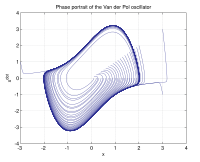Symplectic topology

Okay kiddo, let me try to explain symplectic topology to you in a way that you'll understand.
Let's start with what a symplectic structure is. Have you ever played with a toy that spins around like a top? Well, imagine that top has a special coating on it that makes it slide smoothly against other surfaces. That's the symplectic structure in a nutshell - it's a way of describing how things move and interact with each other in a smooth, frictionless way.
Now, symplectic topology is all about studying the shapes and movements of objects within this symplectic space. We can think of these objects as little particles that are swimming around in a vast ocean of symplectic space. Some particles might stick together and move in unison, while others might collide and bounce off each other at different angles.
Symplectic topology aims to understand how these particles move and interact with each other, and how they can be transformed and changed over time. Just like how you can twist and bend a piece of clay into different shapes, symplectic topology lets us twist and bend our particles into different configurations to see what happens.
Overall, symplectic topology is like exploring a whole new world where the rules of physics are slightly different - a world where things move and interact in smooth, seamless ways that can surprise and delight us.
Let's start with what a symplectic structure is. Have you ever played with a toy that spins around like a top? Well, imagine that top has a special coating on it that makes it slide smoothly against other surfaces. That's the symplectic structure in a nutshell - it's a way of describing how things move and interact with each other in a smooth, frictionless way.
Now, symplectic topology is all about studying the shapes and movements of objects within this symplectic space. We can think of these objects as little particles that are swimming around in a vast ocean of symplectic space. Some particles might stick together and move in unison, while others might collide and bounce off each other at different angles.
Symplectic topology aims to understand how these particles move and interact with each other, and how they can be transformed and changed over time. Just like how you can twist and bend a piece of clay into different shapes, symplectic topology lets us twist and bend our particles into different configurations to see what happens.
Overall, symplectic topology is like exploring a whole new world where the rules of physics are slightly different - a world where things move and interact in smooth, seamless ways that can surprise and delight us.
Related topics others have asked about:
